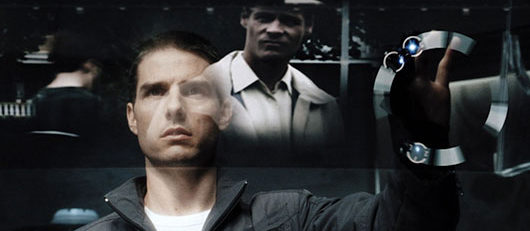
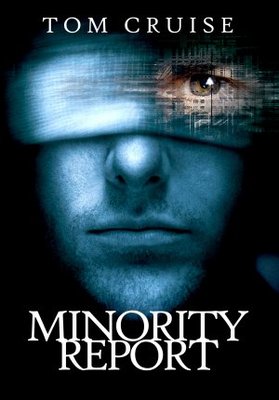
“You created a world without murder. And all you had to do was kill someone to do it.”
Steven Spielberg’s Minority Report is a modern classic speculative science fiction film. Based on Philip K. Dick’s 1956 short story of the same name, the film uses the story’s sci-fi concept—precognition of crimes—as well as its broader themes—paranoia of authoritarianism, anxiety regarding the future of technology, the questioning of free will—as a springboard to launch itself into the realm of cinematic greatness.
Dick was always tinkering with ideas that exhibited a deep suspicion of the future; he was fascinated by the advancement of technology and human progress, yet he was always adamant about finding the flaws in potential developments. Perhaps his most famous work, Do Androids Dream of Electric Sheep?, considers the human capacity for empathy in a future where drugs, religion, and machinery are required to stimulate it. In The Three Stigmata of Palmer Eldritch, a ubiquitous drug allows users to share hallucinogenic experiences, and the divide between reality and hallucination gradually becomes uncertain. Spielberg’s film fits right into the general mold, with a protagonist caught in circumstances arising from the emergence of a new technology—the harnessing of precognitive abilities.
Police Chief John Anderton (Tom Cruise) leads the precrime police force. Headed by Lamar Burgess (Max Von Sydow), the organization is supported by a trio of clairvoyant adolescents who experience precognitive visions of murders yet to be committed. Their visions are captured and perused by Anderton and his team, which allows them to stop the crimes before they occur. In addition to their mental images, the “precogs” produce the name of the victim and the supposed killer. When his analysis of a scene is complete, Anderton presents his case to a legal council who approve of his findings, and then he and his team move to the streets to stop the crime. As the film opens, we learn that there hasn’t been a murder in Washington D.C. in six years. Due to the effectiveness of the task force, murders are no longer premeditated, and so the precrime team is dealing exclusively with crimes of passion.
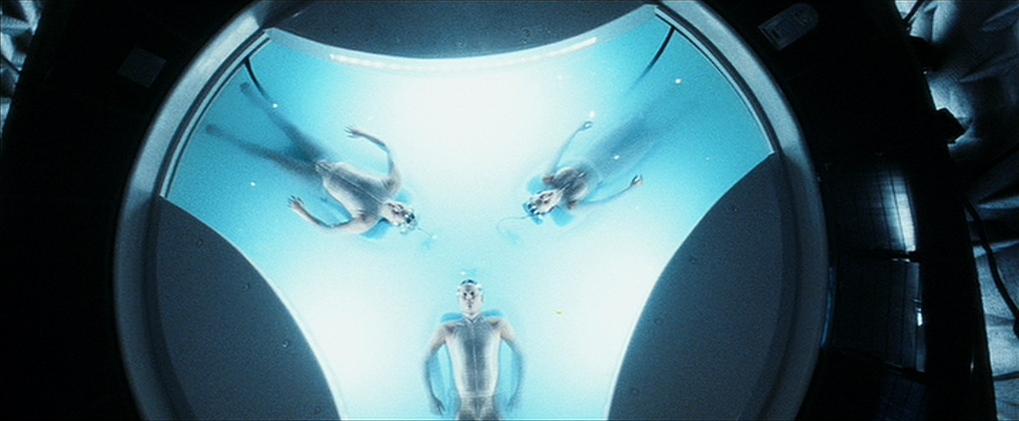
Though Anderton presents himself as professional and competent on the job, his life is on the brink. He joined the precrime program after his son was taken from him while they were playing together at a public pool. He regularly consumes drugs and watches 3D home video projections of his child and his ex-wife. The precrime department is visited by seminary student turned government agent Danny Witwer (Colin Farrell), who has been sent to audit the program and determine its suitability for national expansion. Witwer shows a warrant allowing him access to the room where the precogs float half-conscious in their tanks, and inside the men have an interesting religious discussion, Witwer playing with a crucifix throughout the scene. It is largely inconsequential to the rest of the story, but gives both of the characters depth and adds an interesting wrinkle to the proceedings.
Anderton: “It’s better if you don’t think of them as human.”
Witwer: “No, they’re much more than that. Science has stolen most of our miracles. In a way, they give us hope. Hope of the existence of the divine. I find it interesting that some people have begun to diefy the Precogs.”
Anderton: “Precogs are pattern recognition filters, that’s all.”
Witwer: “Yet you call this room ‘The Temple.'”
Anderton: “Just a nickname.”
Witwer: “The oracle isn’t where the power is anyway. The power has always been with the priests—even if they had to invent the oracle.”
Witwer’s remark comes to mind later when a citizen immediately bows and crosses himself when he is introduced to Agatha in a public context. He believes that the system’s reliance on human input will be its downfall. Soon after this prediction, the precogs have a vision of the murder of Leo Crow at the hands of Anderton, even though Anderton has never heard of the man. Because the system is believed to be foolproof—and so he would simply be arrested and imprisoned with the precogs’ visions as the only required proof—Anderton knows that he has no choice but try to prove his innocence while on the run from his own team—a classic Hitchcockian victim of circumstance.
As Anderton is on the lam, the film introduces us to an array of speculative futuristic developments—some of which have already proven the film’s prescience. Augmented reality, self-driving cars, personalized ads, and a plethora of advancements in gestural computer interfacing are on display, but never in an obtrusive way—the technologies are always part of the backdrop, undergirding the thrilling tale of Anderton and the precogs, never becoming more prominent than is necessary to make the film feel like an extrapolation of our current technological trajectory. Two years prior to filming, Spielberg had arranged for a small group of experts from various fields—medicine, architecture, transportation, physics—to convene for a summit to compile guidelines for making the futuristic world feel as real as possible.
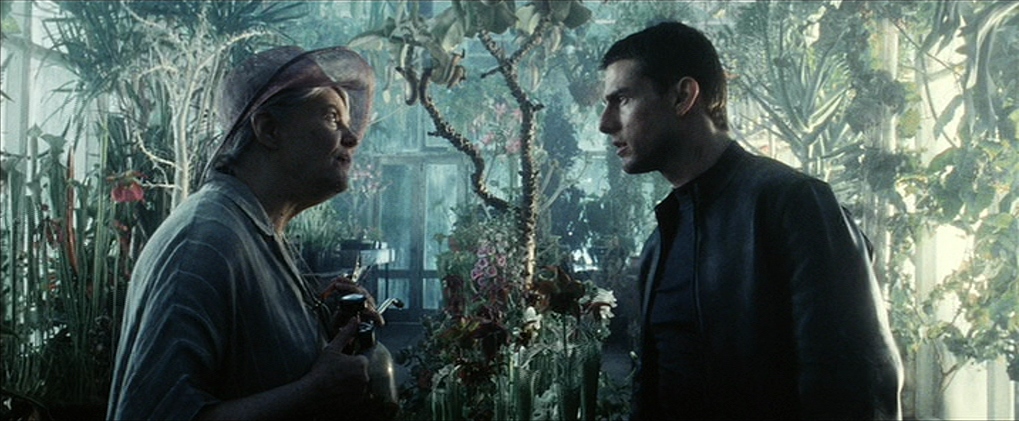
As Anderton flees the city, his automated vehicle wrests control from him, forcing him to jump from vehicle to vehicle as legions of them are moving on tracks in close proximity. He is pursued by crime fighters wearing jetpacks (perhaps the film’s most egregious foray into the implausible), led by Fletcher (Neal McDonough) and aided by ubiquitous retinal scanners throughout the city that track Anderton’s movements.
Anderton makes his way to the home of Iris Hineman (Lois Smith)—the eccentric founder of precrime and the developer of the interface for the precogs—where she tends to her genetically mutated plants in her greenhouse as the two discuss matters. She explains that of the three precogs, Agatha (Samantha Morton) is the most gifted, and occasionally her vision will conflict with those of the twins, Arthur and Dashiell (Michael and Matthew Dickman). Burgess ordered that these reports be destroyed to protect the integrity of the program, but the memory is still logged in Agatha’s subconscious. When Anderton learns about Agatha’s occasional minority reports, he knows that he must return and speak with Agatha in order to prove his innocence.
To avoid detection by the authorities, Anderton procures a new set of eyes, and a transplant is performed by a black market doctor (Peter Stormare) Anderton had previously put away who is now part of the criminal underworld. The sniveling surgeon takes pleasure in torturing Anderton, providing him with rotten food and soured milk as he awaits the recommended twelve hours before taking the bandages off. He consumes more drugs and sinks into dreaming as Samuel Fuller’s 1950s gangster film House of Bamboo is projected onto the wall.
His dream is the only full-color scene in the film; in the rest of the film the color scheme is a cool blue-hued monochrome. His vivid nightmare replays the episode where his son is taken from him as he submerges himself in the pool to amuse his son, testing how long he can hold his breath underwater; when he breaks the surface of the water, and his boy is gone, we realize the profound impact of the event on Anderton’s life. When a coordinated battalion of self-guided robotic spiders infiltrate the apartment complex in The Sprawl where Anderton is hiding, seeking to scan the retinas of the residents and verify their identities, he buys time by submerging himself in an ice bath to avoid detection. A clever overhead shot shows the scittering intruders interrupt the private lives of a number of residents—sad, silly, and sexual alike all offering up their retinas for scanning. The spiders detect Anderton just as his healing time is complete, and they scan his new retinas, identifying him as the previous owner of his new eyes.
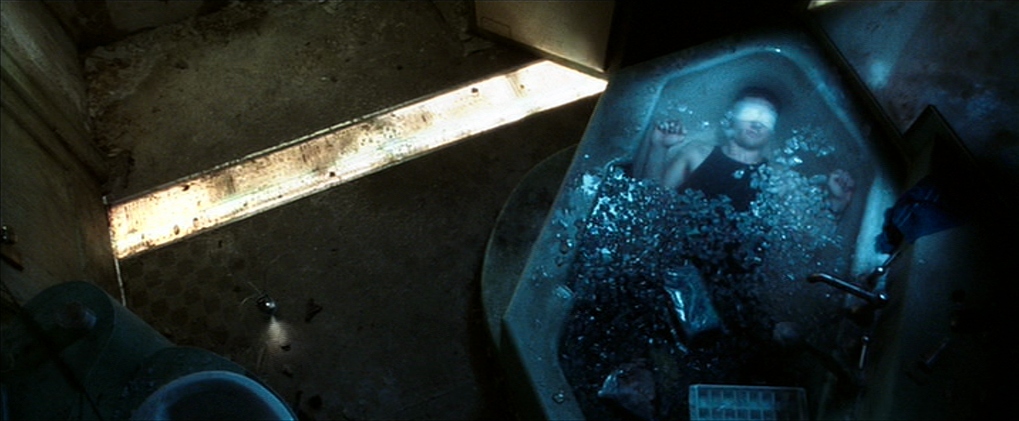
Presented as a reliable security measure in the beginning of the film, the retinal scanners are now seen as a menacing tool for a police force tracking down an innocent man. And so it is with the rest of the futuristic tech. The self-driving maglev cars connected to a magnetic grid postulate an environmentally conscious and more efficient mode of transport, yet when Anderton’s vehicle identifies him as a criminal, control of his travel is taken from him and given to the authorities. Unlike Ridley Scott’s Blade Runner (based on Philip K. Dick’s Do Androids Dream of Electric Sheep?) which presents the author’s dystopia as a collapsing society in a dilapidated futuristic city, Spielberg’s film portrays the technology with optimism at first—as it would be shown to potential consumers and those affected by a given technology’s implementation. In the early scenes, the technology appears to have a positive effect. Anderton whips through his hand motions to view the visions of the precogs from different angles; his team flies in an aerial vehicle to the precrime scene; the retinal scanners provide safety and security for subway passengers. But when Anderton is being sought, these previously helpful tools become weapons in the hands of the police. The situation is made even more dire because these technologies have been given complete trust by society and it is seen as nearly blasphemous to question them.
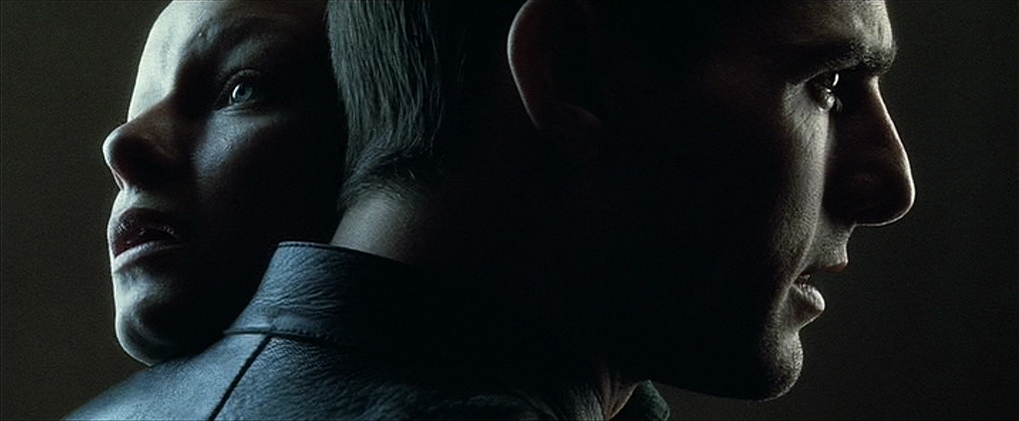
The film’s central philosophical question is that of free will. When the precogs predict Anderton will commit a crime, events inevitably lead to the scenario where he is holding a gun pointed at Leo Crow. After rescuing (or kidnapping) Agatha, who is woozy due to her long stint submerged in a drug-induced hallucinogenic state, Anderton learns that there is no minority report for his precrime—all three precogs predicted he would commit murder. But when he finally arrives at the moment, Agatha is adamant that by knowing his potential future, he can change it willingly. An iconic shot of Anderton and Agatha likens them to Janus—the two-faced Roman god of beginnings, endings, and time. In the film’s finale, Anderton confronts Burgess, the instigator of Anderton’s setup. Burgess is given the same choice—he knows what the precogs have predicted, but is conscious that he can choose differently.
The film’s ending is bittersweet. Anderton is reconciled with his wife, and the Precogs are freed from their imprisonment. Precrime collapses, showing us that society’s gradually deepening dependence on technological advances can prove fatal. Like many of Dick’s stories, the main thrust is an appeal to cling to our humanity. Spielberg’s efforts here are masterful. There are few films that fire on all cylinders the way Minority Report does. Stylized action, intricate plotting, innovative speculative technologies, superb acting, intelligent philosophical commentary, all contained in a breakneck thrill ride.
Sources:
Underkoffler, John et al. “Inside Minority Report’s ‘Idea Summit,’ Visionaries Saw the Future” by Christina Bonnington et al. Wired. 21 June 2012.